
inter alia
6/9/09





So, we just got back from an overnight trip with our friends Jim and Renée and their daughter Rowan to Normandy (with many pictures, posted here, of course), where we did what one is supposed to do there. We ate the traditional food of Normandy, which appears to be alcohol, mostly made made from apples. We also ate apple pies, and seafood in cream, which is what you do when you’re not drinking Calvados (apple brandy), Pommeau (an apple aperitif) or cidre (an apple beer—the one we had is easily the most unpleasant drink I’ve had in the last ten years, with an aftertaste like what you smell in a doctor’s office; I was going to save the bottle so that the medical examiner could find out what sort of nail polish remover it was contaminated with after I died). Renée, after drinking a cup of cidre: “Well, at least I don’t have to worry about the enamel on my teeth anymore.”
We stayed at an agonizingly cute B & B. We went to see the Bayeux tapestry, ‘cause hey—that’s what you do in Bayeux. You know, the famous one telling the story of the Battle of Hastings that looks like this:
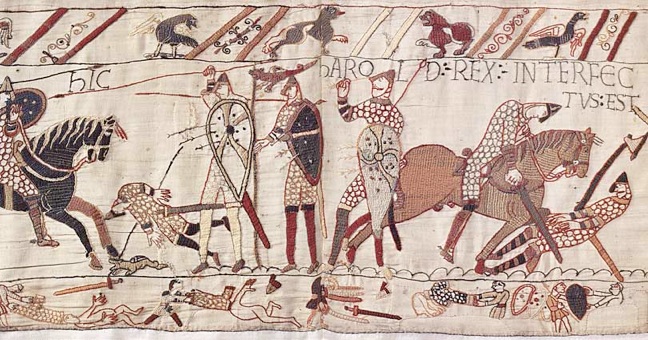
It was awesome, except for the tour group of bored teenagers who filled the room with flashbulbs and cellphone ringtones. The tapestry is huge, running about 70 meters, and some of the images are great. I eschewed the audioguide, figuring I could translate the Latin narrative, which is in fact extremely easy Latin (It says things like “Here: Harold dies.” “Here: Harold crosses the river” and so on). My favorite is when William the conquerer tells his men “ut preparent se viriliter.” “Prepare to be manly.” (To be fair, he adds “sapienter,” as well, meaning: be manly… and wise.)

“Prepare to be manly” is now my favorite phrase. I’m pretty sure that it’s going to show up in the sequel to 300 (will it be called 400?). Here are my poster mockups, showin’ off me mad Photoshoppin’ skillz:
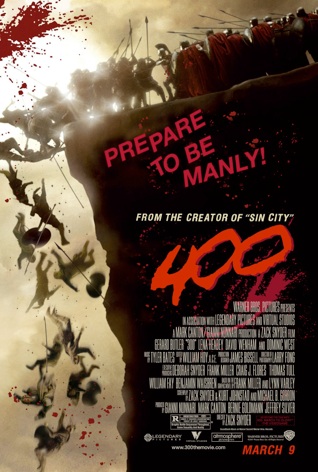
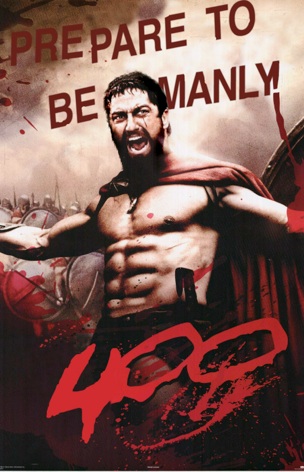
And speaking of manliness, we went to Omaha beach to see the site of the D-Day landings (Bayeaux is in fact the first city liberated in WWII). Is there anything more manly than D-Day? There we went through the American cemetery (over 9,000 US soldiers are buried there), and stopped at the memorial. It is… strange. If it weren’t so politically incorrect, I would revert to high school usage and say it is “gay.” Compare the Soviet manliness at the center of the Soviet WWII memorial, snapping the Nazi swastika in half with his huge sword while rescuing a child, all the while draped in his trenchcoat:
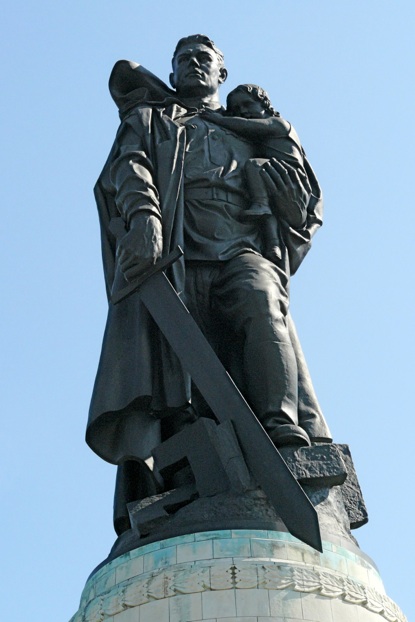
pretty f^(king manly
And the central statue of the American one. Is this a member of Spandau Ballet? What the hell happened here?
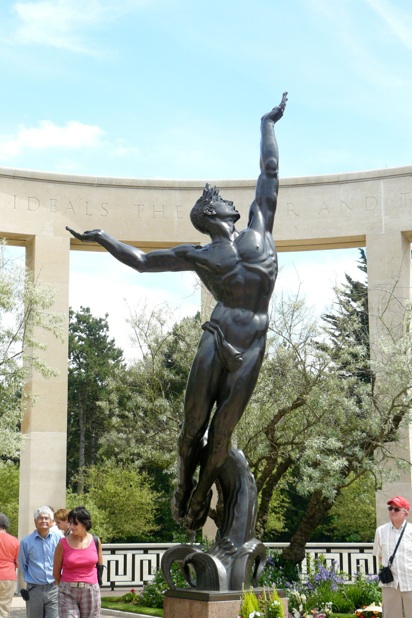
a zero on the Gerard Butler manliness scale
Here: least manly war memorial ever.
In completely other news, I get emails from French Amazon from time to time—the latest features books in English, a special category at amazon.fr. What masterpieces of English literature are we reading this week?
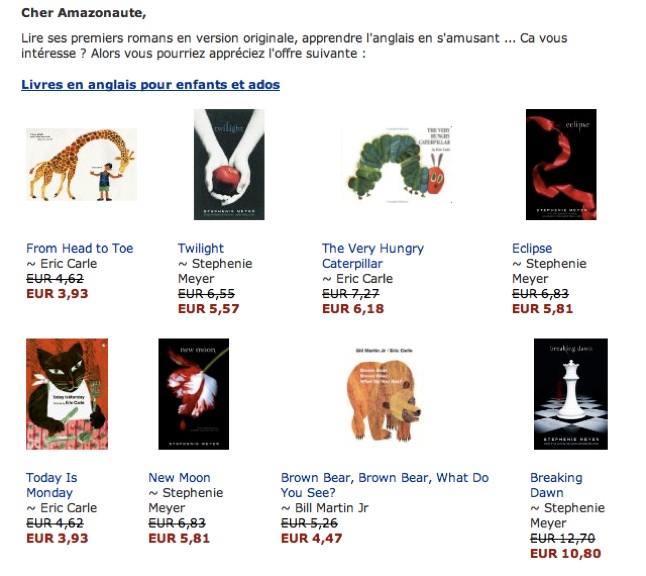
For the record, Brown Bear, Brown Bear, What Do You See? is an Eric Carle/Bill Martin co-production, so really, the only two authors that exist, according to Amazon.fr, are Stephanie Meyer and Eric Carle. And while I haven’t seen any of the French reading Eric Carle on the subway, I have seen hundreds reading Stephanie Meyer, and several reading her in English. Which is quite a slog in another language, I would imagine. Of course, that readership is 100% female, and—here’s the interesting bit—rather older than the 13-14 year old market one might imagine for Ms. Meyer’s excruciating tale of a Mary Sue with the humorously overdetermined name of—I kid you not—Bella Swann, in love with an oh-so-chaste and oh-so-angst-ridden and yet oh-so-gorgeous vampire named Edward. It is—and this is what makes it a bestseller, perhaps—fanfiction, of the kind that dedicated fans write about Star Trek or Pride & Prejudice, but set in a universe of the author’s own invention. Although the novels appear to be written for a YA (young adult audience), I find almost no Amazon chatter about them from YAs, and I haven’t seen any YAs reading them. I first heard of Ms. Meyer’s novels from my sister, who is in her mid-to-late twenties.
So what is the connection to Eric Carle? Repetitious books written for children? (I actually think that it’s got more to do with the total repression of all sexuality, which is probably good in books written for four-year olds, but a little odd when the books are written for 14-30-year olds.) Also, I have finally looked up the correct hyphen usage in the expression “four-year olds” and “seven-year-old boy.” Please make a note of it.

Normandy
Notre Dame de Bayeux
St. Thomas Beckett celebrated mass in this cathedral from 1164-1170. And he even had a movie made about him.






